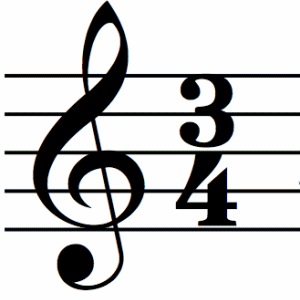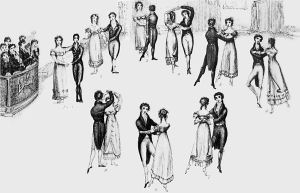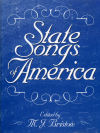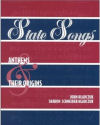
HOME
INTRO
SYMBOLS
ALMANAC
ECONOMY
GEOGRAPHY
STATE MAPS
PEOPLE
FORUM
NEWS
COOL SCHOOLS
STATE QUIZ
STATE LINKS
BOOK STORE
MARKETPLACE
GUESTBOOK
CONTACT US


You may double left-click on a word on this page to retrieve its definition. Tweet Follow
South Carolina State Waltz

South Carolina State Waltz: The Richardson Waltz
The Richardson Waltz
music by descendents of General Richard Richardson
arranged by Mary S. Richardson Briggs in 1985
The story of "The Richardson Waltz" in South Carolina begins in the mid-1700s when Richard Richardson moved into the state from Virginia. Richardson acquired large parcels of land and established himself as a planter at Big Home plantation in Clarenden County. A surveyor, he spent much time in the back country and sometimes encountered the hostile reactions of local Native Americans
A member of the South Carolina state militia, Richardson was given a colonel's commission during the Cherokee Indian wars of 1760 and 1761.
On the political front, Richardson served as a member of the Commons House of Assembly and as a delegate to the First and Second Provincial Congresses of South Carolina where he was involved with framing the first constitution and he was further elected to the legislative council. He also served in the First General Assembly.
As conflicts with Great Britain intensified Richardson participated in the "Snow Campaign" a move to quash loyalist recruiting centers in the southern colonies.
Gretchen Huggins talks about "The Richardson Waltz"
Richardson went on to serve valiantly as a Patriot in the Revolutionary War and was commissioned a brigadier general in 1778.
General Richardson's family line included six governors of the State of South Carolina; his son, James Burchell Richardson, served as the governor of South Carolina from 1802 through 1804; followed by John Peter Richardson, Jr. (1840-1842), founder of the Citadel; and John Peter Richardson, III (1886-1890). Descended from General Richardson's daughter, Susannah Richardson were; Richard I. Manning (1824-1826); John L. Manning (1852-1854); and Richard I. Manning, III (1915-1919).q
But General Richard Richardson's political and military careers don't reflect the whole of Richardson's contribution to the state of South Carolina. Considered the founder of a prominent branch of the Richardson family in the state, he brought with him a unique contribution, a family heirloom, a waltz that had been handed down, by ear, through generations of Richardsons.
Nobody knows exactly who came up with the melody or where or when it originated; perhaps in England, but in mid 1700 South Carolina "The Richardson Waltz" was a staple at gatherings at the Big Home where the Richardsons were known throughout the area for their love of music and dancing and the frequent balls that brought friends and family from far and wide.

South Carolina State Waltz: The Richardson Waltz
Through the years the entire Richardson family has been known for their courtly manners and gracious hospitality.
(Meyers St. Mark's Church has served well 1989)
To prevent its loss to future generations, the music for "The Richardson Waltz" was formally arranged and recorded on paper by descendent Mary S. Richardson Briggs in 1985 at the urging of some members of the Daughters of the American Revolution. This and renewed interest in the song set the stage for efforts to memorialize it for the historical record.
Members of the Richardson family urged action in the South Carolina State Legislature but it wasn't until 1999 that the legislative process commenced.
On November 11, 1999, State Representative Alex Harvin pre-filed House Bill No. 4277 (H4277) to be taken up by the 113th South Carolina Legislature. The bill was referred to the House Committee on Education and Public Works and introduced and read for the first time on January 11, 2000.
A BILL
TO AMEND THE CODE OF LAWS OF SOUTH CAROLINA, 1976, BY ADDING SECTION 1-1-667 SO AS TO DESIGNATE “THE RICHARDSON WALTZ” AS THE OFFICIAL STATE WALTZ.
Whereas, the Richardson family, descendants of General Richard Richardson (1704-1780) who came from Virginia as a surveyor to settle in South Carolina, is known for its great love of music and dancing; and
Whereas, many balls were held as social entertainment for family and friends from far and wide, and the melody of a favorite waltz for dancing was one which was “originated” by a family member who played “by ear”; and
Whereas, this melody, known as “The Richardson Waltz”, still lives today, having been handed down “by ear” from generation to generation but had never been written until 1985, when it was arranged by Mary S. Richardson Briggs; and
Whereas, Mrs. W. M. Richardson of Orangeburg planted the seed for the preservation of “The Richardson Waltz” many years ago, and Mrs. H. B. Richardson of Summerton helped hand it down and preserve it for posterity; and
Whereas, this waltz is a beautiful and soulful melody, is a memento of the musical tradition of the Richardson family, has for many generations played an unofficial but important role in the musical history of South Carolina, and is deserving of designation as the Official State Waltz. Now, therefore,
Be it enacted by the General Assembly of the State of South Carolina:
SECTION 1. Chapter 1, Title 1 of the 1976 Code is amended by adding:
“Section 1 1 667. The ‘Richardson Waltz’ is designated as the official state waltz.”
SECTION 2. This act takes effect upon approval by the Governor.
---XX---
H4277 languished in committee for a couple of months but picked up a good number of co-sponsors, received a favorable recommendation and went on to be approved by a vote of the full House of Representatives on April 20, 2000.
Approved by the House, H4277 was forwarded to the Senate for consideration where it was referred to the Senate Committee on Judiciary. In its course, House Bill No. 4277 became entrapped within the web of the Carolina wolf spider (Hogna carolinensis), the largest spider in North American.
Not only was the Carolina Wolf Spider, sometimes called the giant Carolina wolf spider a large natural presence, the spider had political heft within the South Carolina Senate in the name of Senator Brad Hutto.
Sen. Brad Hutto had a son. His son, Skyler, was a third grader at Sheridan Elementary School in Orangeburg and Skyler had persuaded his father to introduce legislation proposing that the Carolina wolf spider be designated the official state spider of South Carolina. Skyler was determined to ensure that the Carolina wolf spider became the official spider of the state.
The official spider proposal, Senate Bill No. 1091 (S1091) was approved by the Senate but had stalled in the House Committee on Agriculture, Natural Resources and Environmental Affairs and appeared to be going nowhere. Senator Brad Hutto saw opportunity in the form of House Bill No. 4277 and, on May 18, 2000, attached an amendment to "The Richardson Waltz" bill that would add the Carolina wolf spider to the list of South Carolina official designations.
A BILL
TO AMEND THE CODE OF LAWS OF SOUTH CAROLINA, 1976, BY ADDING SECTIONS 1-1-667 AND 1-1-701 SO AS TO DESIGNATE CERTAIN STATE EMBLEMS OR SYMBOLS.
Whereas, the Richardson family, descendants of General Richard Richardson (1704 1780) who came from Virginia as a surveyor to settle in South Carolina, is known for its great love of music and dancing; and
Whereas, many balls were held as social entertainment for family and friends from far and wide, and the melody of a favorite waltz for dancing was one which was “originated” by a family member who played “by ear”; and
Whereas, this melody, known as “The Richardson Waltz”, still lives today, having been handed down “by ear” from generation to generation but had never been written until 1985, when it was arranged by Mary S. Richardson Briggs; and
Whereas, Mrs. W. M. Richardson of Orangeburg planted the seed for the preservation of “The Richardson Waltz” many years ago, and Mrs. H. B. Richardson of Summerton helped hand it down and preserve it for posterity; and
Whereas, this waltz is a beautiful and soulful melody, is a memento of the musical tradition of the Richardson family, has for many generations played an unofficial but important role in the musical history of South Carolina, and is deserving of designation as the Official State Waltz. Now, therefore,
Be it enacted by the General Assembly of the State of South Carolina:
PART I.
SECTION 1. Sections 1 through 4 of this act are known and may be cited as the “Richardson Waltz Act”.
SECTION 2. The General Assembly finds that:
(1) the Richardson family, descendants of General Richard Richardson (1704 1780) who came from Virginia as a surveyor to settle in South Carolina, is known for its great love of music and dancing;
(2) many balls were held as social entertainment for family and friends from far and wide, and the melody of a favorite waltz for dancing was one which was “originated” by a family member who played “by ear”;
(3) this melody, known as “The Richardson Waltz”, still lives today, having been handed down “by ear” from generation to generation but had never been written until 1985, when it was arranged by Mary S. Richardson Briggs;
(4) Mrs. W. M. Richardson of Orangeburg planted the seed for the preservation of “The Richardson Waltz” many years ago, and Mrs. H. B. Richardson of Summerton helped hand it down and preserve it for posterity;
(5) this waltz is a beautiful and soulful melody, is a memento of the musical tradition of the Richardson family, has for many generations played an unofficial but important role in the musical history of South Carolina, and is deserving of designation as the Official State Waltz; and
(6) a bill to designate “The Richardson Waltz” as the official waltz was sponsored by Representatives C. Alexander Harvin, Elsie Rast Stuart, Jimmy C. Bales, Lynn Seithel, Jackson S. “Seth” Whipper, Becky Meacham Richardson, Harry L. Ott, Jr., John Milton “Jake” Knotts, and Walton J. McLeod.
SECTION 3. Chapter 1, Title 1 of the 1976 Code is amended by adding:
“Section 1 1 667. ‘The Richardson Waltz’ is designated as the official state waltz.”
SECTION 4. The Code Commissioner shall distribute copies of Part I of this act to any interested persons including the members of the Richardson family and the Daughters of the American Revolution.
PART II.
SECTION 5. Sections 5 through 8 of this Act are known and may be cited as the “Carolina Wolf Spider Act”.
SECTION 6. The General Assembly finds that:
(1) the state emblems and symbols adopted by the General Assembly and listed in the South Carolina Legislative Manual are an excellent educational resource for students of this State;
(2) after reading in the Legislative Manual about the existing state symbols and emblems, Skyler B. Hutto, a third grade student at Sheridan Elementary School in Orangeburg, noted that there was no official state spider and suggested that the Carolina Wolf Spider be given that designation;
(3) a bill to designate the Carolina Wolf Spider as the official state spider was sponsored by Senator Brad Hutto;
(4) Skyler Hutto has worked diligently to pursue this designation for the Carolina Wolf Spider;
(5) his schoolmates and teachers have followed the progress of the legislation with interest; and
(6) through this experience, the students have learned both about spiders and about how a bill becomes a law, which has enhanced the third graders’ study of South Carolina history.
SECTION 7. Chapter 1, Title 1 of the 1976 Code is amended by adding:
“Section 1 1 701. The ‘Carolina Wolf Spider’, Hogna carolinensis, is designated as the official state spider.”
SECTION 8. The Code Commissioner shall distribute copies of Part II of this act to any interested persons including Skyler B. Hutto and the students and teachers of the Sheridan Elementary Third Grade Class.
PART III.
SECTION 9. This act takes effect upon approval by the Governor.
/s/McKinley Washington, Jr. /s/Elsie Rast Stuart
/s/Maggie Wallace Glover /s/Walton J. McLeod
/s/C. Bradley Hutto /s/Edith Martin Rodgers
On Part of the Senate. On Part of the House.---XX---
House Bill No. 4277, approved by the Senate as amended, was sent back the House for their agreement. The House returned an adamant "No!" The addition of an official spider to their waltz bill was out of the question! It looked like the waltz bill would die in the Senate
Senators insisted that the official spider be included in the legislation. House Representatives refused.
In the end, the Senate, and the spider, carried the day and an agreement was reached by which the Carolina wolf spider amendment would be included in the legislation but worded in such a way that it "would create different --but official-- signed versions of the legislation." [1]
(A389, R459, H4277)
AN ACT TO AMEND THE CODE OF LAWS OF SOUTH CAROLINA, 1976, BY ADDING SECTIONS 1-1-667 AND 1-1-701 SO AS TO DESIGNATE CERTAIN STATE EMBLEMS OR SYMBOLS.
Be it enacted by the General Assembly of the State of South Carolina:
PART I
Richardson Waltz Act
SECTION 1. Sections 1 through 4 of this act are known and may be cited as the “Richardson Waltz Act”.
Findings
SECTION 2. The General Assembly finds that:
(1) The Richardson family, descendants of General Richard Richardson (1704 1780) who came from Virginia as a surveyor to settle in South Carolina, is known for its great love of music and dancing.
(2) Many balls were held as social entertainment for family and friends from far and wide, and the melody of a favorite waltz for dancing was one which was “originated” by a family member who played “by ear”.
(3) This melody, known as “The Richardson Waltz”, still lives today, having been handed down “by ear” from generation to generation but had never been written until 1985, when it was arranged by Mary S. Richardson Briggs.
(4) Mrs. W. M. Richardson of Orangeburg planted the seed for the preservation of “The Richardson Waltz” many years ago, and Mrs. H. B. Richardson of Summerton helped hand it down and preserve it for posterity.
(5) This waltz is a beautiful and soulful melody, is a memento of the musical tradition of the Richardson family, has for many generations played an unofficial but important role in the musical history of South Carolina, and is deserving of designation as the Official State Waltz.
(6) A bill to designate “The Richardson Waltz” as the official waltz was sponsored by Representatives C. Alexander Harvin III, Elsie Rast Stuart, Jimmy C. Bales, Lynn Seithel, Jackson S. “Seth” Whipper, Becky Meacham Richardson, Harry L. Ott, Jr., John Milton “Jake” Knotts, Jr., and Walton J. McLeod.
Official state waltz
SECTION 3. Chapter 1, Title 1 of the 1976 Code is amended by adding:
“Section 1 1 667. ‘The Richardson Waltz’ is designated as the official state waltz.”
Distribution by Code Commissioner
SECTION 4. The Code Commissioner shall distribute copies of Part I of this act to any interested persons including the members of the Richardson family and the Daughters of the American Revolution.
PART II
Carolina Wolf Spider Act
SECTION 5. Sections 5 through 8 of this act are known and may be cited as the “Carolina Wolf Spider Act”.
Findings
SECTION 6. The General Assembly finds that:
(1) The state emblems and symbols adopted by the General Assembly and listed in the South Carolina Legislative Manual are an excellent educational resource for students of this State.
(2) After reading in the Legislative Manual about the existing state symbols and emblems, Skyler B. Hutto, a third grade student at Sheridan Elementary School in Orangeburg, noted that there was no official state spider and suggested that the Carolina Wolf Spider be given that designation.
(3) A bill to designate the Carolina Wolf Spider as the official state spider was sponsored by Senator Brad Hutto.
(4) Skyler Hutto has worked diligently to pursue this designation for the Carolina Wolf Spider.
(5) His schoolmates and teachers have followed the progress of the legislation with interest.
(6) Through this experience, the students have learned both about spiders and about how a bill becomes a law, which has enhanced the third graders’ study of South Carolina history.
Official state spider
SECTION 7. Chapter 1, Title 1 of the 1976 Code is amended by adding:
“Section 1 1 701. The ‘Carolina Wolf Spider’, Hogna carolinensis, is designated as the official state spider.”
Distribution by Code Commissioner
SECTION 8. The Code Commissioner shall distribute copies of Part II of this act to any interested persons including Skyler B. Hutto and the students and teachers of the Sheridan Elementary third grade class.
PART III
Time effective
SECTION 9. This act takes effect upon approval by the Governor.
Ratified the 22nd day of June, 2000.
Approved the 21st day of July, 2000.
----------
The waltz, known as "The Richardson Waltz", arranged by Mary S. Richardson Briggs, was ratified by the South Carolina Legislature as the official state waltz of South Carolina on June 22, 2000.
"The "Richardson Waltz" was adopted as the official state waltz, by Act No. 389, when Governor James Hovis Hodges signed House Bill No. 4277 on July 21, 2000.
NOTE: "The Richardson Waltz" is not currently available to the public in commercial sheet music form. That being said, we have some indication that copies of the music can be found in two places.
- Sumter County Museum: The Sherman Smith Collection, Accession Number (2000-14). 122 North Washington Street, P.O. Box 1456, Sumter, SC 29151-1456, Phone 803-775-0908. www.sumtercountymuseum.org
- St. Mark's Episcopal Church, near Pinewood, S.C. South Carolina Secondary Road #51. South Carolina Department of Archives and History National Registry of Historic Places Inventory - Nomination Form

We are fortunate, thanks to Mary's great niece Gretchen Huggins, to have video of Mary S. Richardson Briggs playing "The Richardson Waltz."
South Carolina Law
The following information was excerpted from the South Carolina General Statutes, Title 1, Chapter 1, Article 9, Section 1-1-667.
TITLE 1. ADMINISTRATION OF THE GOVERNMENT
CHAPTER 1. GENERAL PROVISIONS
ARTICLE 9. STATE EMBLEMS, PLEDGE TO STATE FLAG, OFFICIAL OBSERVANCES
SECTION 1-1-667. OFFICIAL STATE WALTZ
SECTION 1-1-667. Official State waltz. "The Richardson Waltz" is designated as the official state waltz.
Sources...
[1] Associated Press. "South Carolina Gets Official Waltz, Spider." Aiken County Standard, sec. A: 6. 22 July 2000. Web. 30 Aug. 2016.
Harvin, Alex. "H*4277." Session 113 - (1999-2000). South Carolina Legislature, 27 July 2000. Web. 8 May 2003.
Meyers, Portia. "St. Mark's Church Has Served Well." The Item [Sumter] 7 Jan. 1989, sec. A: 4. 7 Jan. 1989. Web. 30 Aug. 2016.
Huggins, Gretchen. "Official South Carolina State Waltz." Genealogy.com. Genealogy.com, 30 Mar. 2006. Web. 26 Aug. 2016.
"SC State Waltz – Richardson Waltz." © 2016 SCIWAY.net, LLC. © 2016 SCIWAY.net, LLC, n.d. Web. 26 Aug. 2016.
Shankle, George Earlie. State Names, Flags, Seals, Songs, Birds, Flowers, and Other Symbols. Irvine, Calif.: Reprint Services Corp, Revised edition, 1971.
Shearer, Benjamin F. and Barbara S. State Names, Seals, Flags and Symbols: A Historical Guide Third Edition, Revised and Expanded. Westport, Conn: Greenwood Press, 3 Sub edition, 2001.
"Sherman Smith Collection, Accession Number (2000 - 14)." Sumter County Museum. Sumter County Museum, n.d. Web. 8 May 2003.
"South Carolina Code of Laws." South Carolina Legislature. South Carolina Legislative Services Agency, n.d. Web. 12 Dec 2004
Additional Information
Dances, Music & Poets: The South Carolina State House.
SC State Waltz – Richardson Waltz: South Carolina Information Highway (SCIWAY.net, LLC).
History of Waltz: Brief history of the waltz from Central Home.
Waltz: Entry from Wikipedia, the free encyclopedia.
How to Waltz Dance Online – Waltz Steps For beginners: Leon Turesky's Learntodance.com; Boston professional ballroom dance instructor.
State songs: Complete list of official state songs from NETSTATE.COM
More symbols & emblems: Complete list of official South Carolina state symbols from NETSTATE.COM.

State Songs of America Edited by M. J. Bristow. 184 pages. Greenwood Press (February 28, 2000)
This book provides the music and lyrics for the official songs adopted by the state governments.
Arranged alphabetically by state, each song has a single vocal line over a piano accompaniment, with one verse only under the vocal line and remaining verses appearing separately.

State Songs: Anthems & Their Origins by John Hladczuk and Sharon Schneider Hladczuk. 240 pages. Scarecrow Press (September 26, 2000)
Histories of these songs, biographical information about the composers and lyricists, and background on each song's entrance into status as official make this source the most comprehensive in existence.
The entries include sheet music, allowing readers to reproduce for themselves the tunes that have proved so important in the history of the Union.

